Download your PDF score!
By music teachers, for their students
| Title | Author | Set | Prices | ||
|---|---|---|---|---|---|

|
German dance |
Wolfgang Amadeus Mozart |
Ensemble à vents |
14.90€ |
|

|
Toréador |
Georges Bizet |
Quintette à vent |
14.90€ |
|

|
Air and Rondo |
Friedrich Haendel |
Quintette à vent |
14.90€ |
|
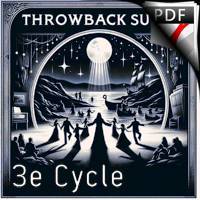
|
Throwback Suite (Wind quintet) |
Roy Scott Alexander |
Quintette à vent |
19.90€ |
|

|
Soldiers Chorus |
Charles Gounod |
Quintette à vents |
14.90€ |
|
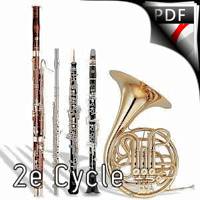
|
Libertango (Wind quintet) |
Astor Piazzolla |
Quintette à vents |
14.90€ |
|

|
Elegy |
Lucie Libourel |
hautbois flûte basson piano duo |
7.90€ |
|
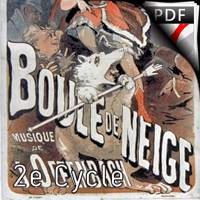
|
Romance des souvenirs |
Jacques Offenbach |
Quatuor à vent |
7.90€ |
|

|
To You |
William Sheller |
Quatuor |
7.90€ |
|
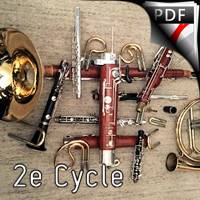
|
Der Pappenheimer |
Joseph Haydn |
Quintette à vents |
5.90€ |
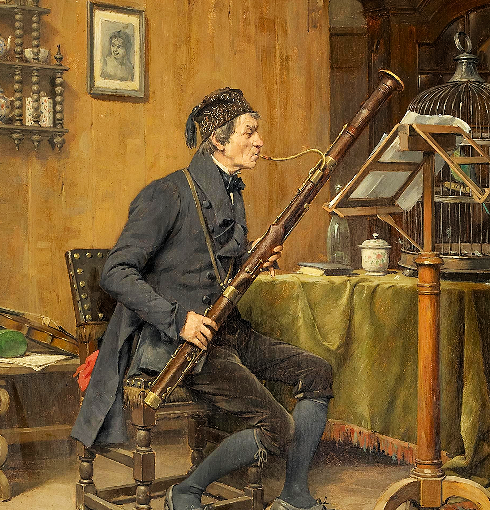 The bassoon is a wind instrument in the double reed family that generally plays music written in the keys of F. Appearing in its modern form in the nineteenth century, the bassoon occupies an important place in orchestral literature and chamber music. The bassoon is a non-transposing instrument known for its distinctive tone colour, wide range, variety of character and agility. Someone who plays the bassoon is called a bassoonist.
The bassoon is a wind instrument in the double reed family that generally plays music written in the keys of F. Appearing in its modern form in the nineteenth century, the bassoon occupies an important place in orchestral literature and chamber music. The bassoon is a non-transposing instrument known for its distinctive tone colour, wide range, variety of character and agility. Someone who plays the bassoon is called a bassoonist.
Heckel system (German)
The conception of the modern bassoon owes much to the performer, teacher and composer Carl Almenräder. With the help of German acoustics researcher Gottfried Weber, he developed the bassoon with a range of four octaves. Almenräder's improvements to the bassoon began with an 1823 treatise describing ways to improve intonation, response and technical ease of playing. Subsequent articles developed his ideas further. His employment at Schott gave him the freedom to build and test instruments according to these new designs, and he published the results in Caecilia, Schott's in-house journal. Almenräder continued to build instruments until his death in 1846, and Ludwig van Beethoven himself requested one of the newly made instruments. In 1831, Almenräder left Schott to set up his own factory with a partner, Johann Adam Heckel.
Heckel and two generations of descendants continued to refine the bassoon, and their instruments became the benchmark, followed by other makers. Because of their superior quality (an improvement on one of the main drawbacks of the Almenräder), Heckel's instruments rivalled the Wiener system, a Boehm-style bassoon, and a fully keyed instrument designed by Charles-Joseph Sax, father of Adolphe Sax. F.W. Kruspe made a late attempt in 1893 to reform the fingering system, but it failed to catch on. Other attempts to improve the instrument included a 24-key model and a single-reed jar, but both had detrimental effects on tone and were abandoned.
By the early twentieth century, the German Heckel-style bassoon was dominant. Heckel himself had made over 1,100 instruments by the turn of the twentieth century (serial numbers start at 3,000), and the instruments of British makers were no longer desirable for the changing needs of the symphony orchestra, remaining mainly in use by military bands.
With the exception of a brief 1940s conversion to ball-bearing manufacture, the Heckel group has produced instruments without interruption to the present day. Heckel bassoons are considered by many to be the best, although a range of Heckel-style instruments is available from several other manufacturers, all with slightly different playing characteristics.
Because its mechanism is primitive compared with most modern woodwinds, luthiers have sometimes tried to 'reinvent' the bassoon. In the 1960s, Giles Brindley began to develop what he called the 'logical bassoon', which aimed to improve intonation and sound uniformity through the use of the 'logical bassoon'.uniformity of sound through the use of an electrically activated mechanism, making the possible key combinations too complex for the human hand to manage. Brindley's bassoon logic was never marketed.
Buffet system (French)
The Buffet System bassoon achieved its basic acoustic properties a little earlier than the Heckel. Thereafter, it continued to develop more conservatively. Whereas the early history of the Heckel bassoon included a complete overhaul of the instrument, both acoustically and in terms of the keys, the development of the Buffet system consisted mainly of improvements to the keys. This minimalist approach to the Buffet deprived it of the greater intonation consistency, ease of use and power found in Heckel bassoons, but the Buffet is considered by some to have a more vocal and expressive quality. In 1934, the conductor John Foulds deplored the predominance of Heckel-style bassoons, considering them too homogenous in sound with the horn. The modern Buffet system has 22 keys with a range more or less the same as that of the Heckel.
Compared with the Heckel bassoon, the Buffet bassoon system has a narrower bore and a simpler mechanism, requiring different fingerings for many notes. Switching from Heckel to Buffet requires a complete re-learning process. Buffet instruments are known for their higher tone and greater ease in the upper registers. French wind instruments in general have a certain 'sharpness' to their sound, with a more pronounced vocal quality than is usual elsewhere, and the Buffet bassoon is no exception. This type of sound can be beneficial in the music of French composers, but it has been criticised for being too intrusive. As with all bassoons, the sound varies considerably depending on the instrument and the performer. In the hands of a lesser instrumentalist, the Heckel bassoon can sound flat and woody, but good bassoonists manage to produce a vibrant, singing sound. Conversely, a poorly played Buffet may sound droning and nasal, but good players produce a warm, expressive sound that is different from, but not inferior to, the Heckel.
Although the UK once favoured the French system, buffet system instruments are no longer made there and the last major British maker of the French system retired in the 1980s. However, thanks to its continued use in certain regions and its distinctive timbre, the Buffet continues to have a place in the modern bassoon, particularly in France, where it originated. Buffet-model bassoons are currently made in Paris by Buffet Crampon and the Ducasse workshop (Romainville, France). The Selmer Company stopped making bassoons for the French system around 2012. Some musicians, such as the late Gerald Corey in Canada, have learned to play both types and will alternate between them depending on the repertoire.
